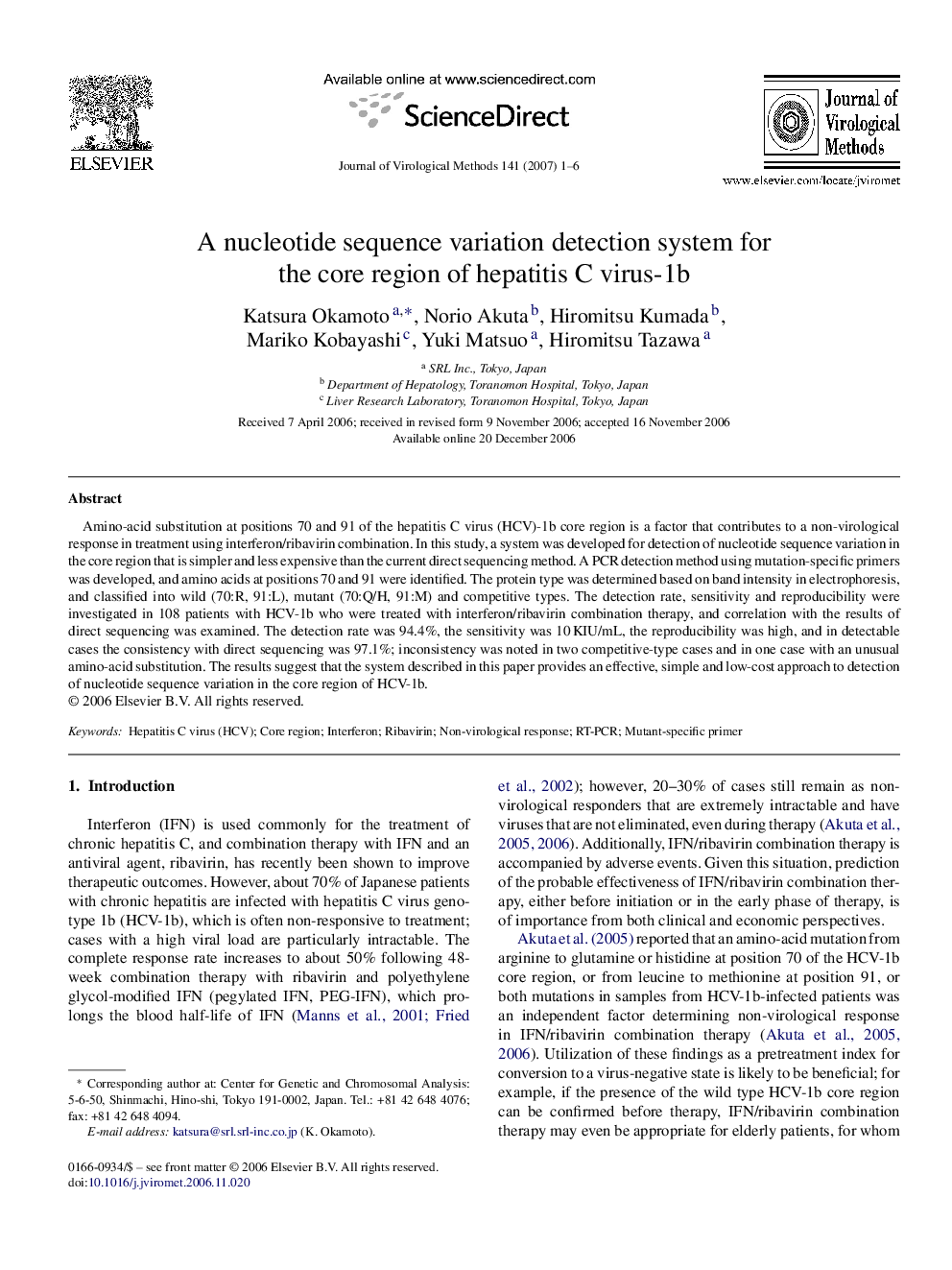| Article ID | Journal | Published Year | Pages | File Type |
|---|---|---|---|---|
| 3408166 | Journal of Virological Methods | 2007 | 6 Pages |
Amino-acid substitution at positions 70 and 91 of the hepatitis C virus (HCV)-1b core region is a factor that contributes to a non-virological response in treatment using interferon/ribavirin combination. In this study, a system was developed for detection of nucleotide sequence variation in the core region that is simpler and less expensive than the current direct sequencing method. A PCR detection method using mutation-specific primers was developed, and amino acids at positions 70 and 91 were identified. The protein type was determined based on band intensity in electrophoresis, and classified into wild (70:R, 91:L), mutant (70:Q/H, 91:M) and competitive types. The detection rate, sensitivity and reproducibility were investigated in 108 patients with HCV-1b who were treated with interferon/ribavirin combination therapy, and correlation with the results of direct sequencing was examined. The detection rate was 94.4%, the sensitivity was 10 KIU/mL, the reproducibility was high, and in detectable cases the consistency with direct sequencing was 97.1%; inconsistency was noted in two competitive-type cases and in one case with an unusual amino-acid substitution. The results suggest that the system described in this paper provides an effective, simple and low-cost approach to detection of nucleotide sequence variation in the core region of HCV-1b.
